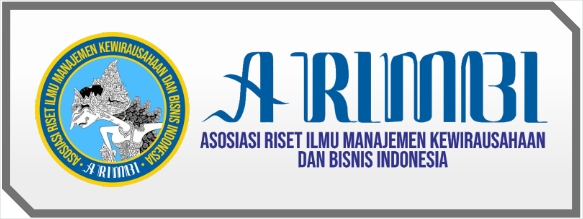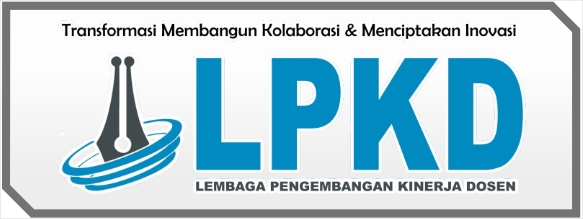DESIGN OF LOGISTICS COMPANY PERFORMANCE MEASUREMENT
DOI:
https://doi.org/10.55606/iceb.v1i2.232Keywords:
Performance Measurement, Balance Scorecard (BSC), Analitycal Hierarchy Process (AHP)Abstract
Bubu Logistic Indonesia is a service company. Based on company reports the performance of the operational system shows quite good results, but integrated performance measurement has never been carried out. This study aims to design a performance measurement PT. Bubu Logistic Indonesia with several integrated aspects, namely financial perspective, customer perspective, internal business process perspective, as well as learning and growth perspective which will improve the performance of employees of PT. Bubu Logistics Indonesia. This research is a design process of measuring the performance of employees of PT. Bubu Logistic Indonesia uses the Analytical Hierarchy Process (AHP) and Balance Scorecard (BSC) methods. To find out the results of designing employee performance measurements, the next step is to make a strategic map that has been proposed and approved by management and then grouped into 4 Balance Scorecard (BSC) perspectives. To find out the weight and priority of each perspective, the Analytical Hierarchy Process (AHP) method is used. The financial perspective has a weight of 39.25%, followed by a customer perspective of 36.75%, an internal business perspective has a weight of 18.75%, and a growth and learning perspective has a weight of 5.25%. From the results of measuring the performance of employees of PT. Bubu Logistic Indonesia has an average performance measurement score for 6 months of 56%.
References
Akkermans, H. and Oorschot, K.V. (2002), “Developing a balanced scorecard with system dynamics”, Proceeding of 2002 International System Dynamics Conference, Palermo, 28 July-1 August.
Almonte, S., Chua, A.B., Lao, Y.I. and Urrutua, K. (2017), Achieving Dual Objectives: Challenges and Strategies Faced by Philippine Social Enterprises, De La Salle University, Center for Business Research & Development, Manila.
Atkinson, A.A., Waterhouse, J.H. and Wells, R.B. (1997), “A stakeholder’s approach to strategic performance measurement”, Sloan Management Review, Vol. 1 No. 1, pp. 31-43
Bai, C.E. and Xu, L.C. (2005), “Incentives for CEOs with multitasks: evidence from Chinese state-owned enterprises”, Journal of Comparative Economics, Vol. 33 No. 3, pp. 517-539.
Bernabe, F. (2011), “A system dynamics-based Balanced Scorecard to support strategic decision making”, International Journal of Productivity and Performance Management, Vol. 60 No. 45, pp. 446-473.
Bianchi, C. and Rivenbark, W. (2012), “Using system dynamics to enhance performance management in local government: an application to residential refuse collection”, APPAM Fall Research Conference, pp. 1-25.
Bowersox, D.J., Closs, D.J. and Stank, T.P. (2000), “Ten mega-trends that will revolutionize supply chain logistics”, Journal of Business Logistics, Vol. 21 No. 2, pp. 1-15.
Brown, M.G. (2000), Winning Score: How to Design and Implement Organizational Scorecards, Productivity Press, Cambridge, MA.
Caldeirinha, V., Felício, J. and Dionísio, A. (2013), The Container Terminal Characteristics and Customer’s Satisfaction, University of Evora, Evora.
Cuthbertson, R. and Piotrowicz, W. (2011), “Performance measurement systems in supply chains”, International Journal of Productivity and Performance Management, Vol. 60 No. 6, pp. 583-602
Ellis, C. (2011), A Theory of Constraints Service Systems Improvement Method: Case of The Airline Turnaround Problem, Florida International University, Fort Lauderdale, FL.
Garcia, F.A., Marchetta, M.G., Camargo, M., Morel, L. and Forradellas, R.Q. (2012), “A framework for measuring logistics performance in the wine industry”, International Journal of Production Economics, Vol. 135 No. 1, pp. 284-298
Gkonis, G. and Psaraftis, N. (2004), Some Key Affecting Liner Shipping Cost, National Technical University of Athens, Athens.
Lye, J. (2004), “Performance measurement in the public sector: a clarification and agenda for research”, The Fourth Asia Pacific Interdisciplinary Research in Accounting Conference, Singapore.
Mabin, V. and Balderstone, S. (2000), The World of the Theory of Constraints: A Review of the International Literature, St. Lucie Press, Boca Raton, FL, pp. 11-12.
Mentzer, J. and Konrad, B.P. (1991), “An efficiency/effectiveness approach to logistics performance”, Journal of Business Logistics, Vol. 12 No. l, pp. 33-62.
Micco, A. and Perez, N. (2002), Determinants of Marine Transportation Cost, IDB Working Paper No. 371, Inter-American Development Bank, Washington, DC.
Mulyono, M., Manfaat, J. and Ahmadi, T. (2016), “Applying theory of constraint to identify the constraint of marine transportation system”, International Journal of Oceans and Oceanography, Vol. 10 No. 2, pp. 173-190.
Neely, A., Gregory, M. and Platts, K. (1995), “Performance measurement system design a literature review and research agenda”, International Journal of Operations & Production Management, Vol. 15 No. 4, pp. 80-116.
Neely, A.D., Adams, C. and Kennerley, M. (2002), The Performance Prism: The Scorecard for Measuring and Managing Business Success, FT Prentice-Hall, London.
Norreklit, H. (2000), “The balance on the Balanced Scorecard – a critical analysis of some of its assumptions”, Management Accounting Research, Vol. 11 No. 1, pp. 65-88.
Panayides, P.M. (2006), “Maritime logistics and global supply chains: towards a research Agenda”, Maritime Economics and Logistics, Vol. 8 No. 1, pp. 3-18.
Parasuraman, A., Zeithaml, V.A. and Berry, L.L. (1988), “SERVQUAL: a multiple-item scale for measuring consumer perceptions of service quality”, Journal of Retailing, Vol. 64 No. 1, pp. 12-40.
Rafele, C. and Cagliano, A. (2006), “Performance measurement in supply chain supported by system dynamics”, 12th IFAC Symposium on Information Control Problems in Manufacturing, St Etienne, 17-19 May.
Rezaei, J., Roekel, W. and Tavasszy, L. (2018), “Measuring the relative importance of the logistics performance index indicators using best worst method”, Transport Policy, Vol. 68, September, pp. 158-169.
Santos, S., Belton, V. and Howick, S. (2001), “Integrating system dynamics and multicriteria analysis: towards organisational learning for performance improvement”, The 19th International Conference of The System Dynamics Society, Atlanta, 23-27 July.
Santos, S., Belton, V. and Howick, S. (2002), “Adding value to performance measurement by using system dynamics and multicriteria analysis”, International Journal of Operations & Production Management, Vol. 22 No. 11, pp. 1246-1272.
Schönsleben, P. (2007), Integral Logistics Management – Operations and Supply Chain Management in Comprehensive Value-added Networks, Auerbach Publications, Boca Raton, FL.
Swiatczak, M., Morner, M. and Finkbeiner, N. (2015), “How can performance measurement systems empower managers? An exploratory study in state-owned enterprises”, International Journal of Public Sector Management, Vol. 28 No. 4, pp. 371-403.
Teas, K.R. (1993), “Expectations, performance evaluation and consumers’ perceptions of quality”, Journal of Marketing, Vol. 57 No. 4, pp. 18-24.
Wibisono, D. (2003), “A framework of performance measurement system for manufacturing company”, The South East Asian Journal of Management, Vol. 5 No. 2, pp. 107-118.
Wisner, J.D. (2003), “A structural equation model of supply chain management strategies and firm performance”, Journal of Business Logistics, Vol. 24 No. 1, pp. 1-26.
Wu, J., Chen, C. and Tsai, R. (2006), “Using system dynamics approach to construct a performance measurement model for pharmacy supply chain management”, Journal of International Technology and Information Management, Vol. 15 No. 1, pp. 66-78.
Zhang, H. and Okoroafo, S.C. (2015), “Third-party logistics (3PL) and supply chain performance in the Chinese market: a conceptual framework”, Engineering Management Research, Vol. 4 No. 1, pp. 38-48.
















